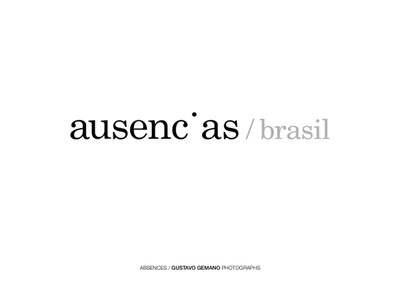Die Leere des unbesetzten Stuhls

Die Familie nutzte ein verlängertes Wochenende für einen Ausflug. Auf der Landstraße São Paulo – Mogi Mirim machten sie einen kurzen Stopp und ein Bild: die Mutter, die Tochter und der Sohn stehen Arm in Arm, gelehnt an die Kühlerhaube, in der Ferne verliert sich die Flucht der Autostraße. 48 Jahre später, im Jahre 2012, die gleiche Landstraße: Arm in Arm stehen Mutter und Tochter vor dem parkenden Wagen, die Flucht der Straße verliert sich immer noch im Hintergrund. Aber der Sohn fehlt. Luiz Almeida Araújo, damals 27 Jahre, wurde im Juni 1971 auf offener Straße verhaftet und ist seither verschwunden.
Die Familie Cardoso Rocha traf sich stets zum Familienessen, damals im Belo Horizonte Anfang der 1960er Jahre. Die Rochas waren eine kinderreiche Familie, und alle gingen oft zusammen ins Restaurant. Zu neunt sind sie 1961 um den Tisch versammelt. 2012 sitzen nur noch acht Familienmitglieder um den Tisch herum. Arnaldo Cardoso Rocha fehlt. 1969 ging Arnaldo für die Stadtguerrilla Ação Libertadora Nacional (ALN) in den Untergrund. Er starb 1973 – laut Militärangaben infolge eines Schusswechsels. Aussagen von Zeug_innen zufolge wurde er aber lebend festgenommen und wurde im Folterzentrum der DOI-CODI in São Paulo ermordet.
Ana Rosa Kucinski Silva lehnt, entspannt sitzend, am Rahmen einer Haustür in Paraty, wohin die Familie aus São Paulo im Jahre 1966 einen Ausflug gemacht hatte. 2012 sitzt niemand vor der Tür. Ana Rosa hatte sich am 22. April 1974 mit ihrem Ehemann zum Mittagessen im Zentrum São Paulos verabredet (siehe LN 471/472). Dort wurden sie und ihr Mann Wilson Silva verhaftet – und nie wieder gesehen.
Es sind die Bilder des argentinischen Fotografen Gustavo Germano. Und die der Familienangehörigen der Verschwundenen. Gustavo Germano hat dieses Projekt in Brasilien im vergangenen Jahr mit Unterstützung des Menschenrechtssekretariats realisiert, nachdem er zuvor das gleiche Projekt in Argentinien durchgeführt hatte.
Germano dokumentiert die Geschichten der Opfer der brasilianischen Militärdiktatur (1964-1985) dadurch, dass er Fotos aus den Familienalben dreißig, vierzig Jahre später mit den Hinterbliebenen nachstellt. Die Bilder werden durch die Lebensgeschichten der Verschwundenen und ihrer Familienangehörigen, in der Übersetzung aus dem Portugiesischen von Sarita Brandt und Ursula Kindel, hervorragend ergänzt.
In der Gegenüberstellung der alten und neuen Fotografien setzt Germano so die Abwesenheit der politischen Verschwundenen und von der Diktatur Ermordeten einfühlsam in Szene. Es ist diese Leere des unbesetzten Stuhls am Familientisch, die nicht vieler Worte der Erklärung bedarf. Selten sprechen Fotografien bereits beim ersten Anblick so für sich.
// Christian Russau
Ausstellung „Ausências“ // Fotografien: Gustavo Germano und die Familienangehörigen der Verschwundenen // Kontakt und Informationen zur Ausstellung bei: www.gustavogermano.com
Die Ausstellung „Ausências Brasil“ wurde produziert durch das Brasilianische Menschenrechtssekretariat Secretaria de Dereitos Humanos da Presidência da República mit Unterstützung der brasilianischen Agentur Alice – Agência livre para informação, cidadania e educação
Im Rahmen des Ehrengastauftritts von Brasilien auf der Frankfurter Buchmesse war die Ausstellung „Ausências Brasil“ vom 7. – 20. Oktober 2013 im Haus am Dom in Frankfurt zu sehen.
Die Ausstellung „Ausências“ wird voraussichtlich im Frühjahr 2014 in Berlin und Köln/Bonn im Rahmen der „Nunca-Mais“-Brasilien-Tage gezeigt werden, die an den 50. Jahrestag des Militärputsches in Brasilien erinnern. Das Programm der „Nunca-Mais“-Brasilien-Tage wird demnächst hier bekannt gegeben werden.
Diese Rezension erscheint auch in der neuen Ausgabe der Lateinamerika Nachrichten, Dezember 2013, LN 474.
---
The emptiness of the unoccupied seat
By Christian Russau
Translation Clay Johnson
50 years after the beginning of the Brazilian military dictatorship the Argentine photographer Gustavo Germano commemorates the disappeared with the exhibition „Ausências“
The family took advantage of an extended weekend for an excursion. On the highway São Paulo – Mogi Mirim made a short stop and took a picture: mother, daughter and son are standing arm in arm, leaning on the hood. The flight of the road is lost in the distance. 48 years later, in 2012, the same highway: mother and daughter are standing arm in arm in front of the parking vehicle, the flight of the road is still lost in the background. But the son is missing. Luiz Almeida Araújo, then 27 years old, was arrested on an open street in June 1971 and has since disappeared.
The family Cardoso Rocha continued meeting for family meals, back then, at the beginning of the 1960s, in Belo Horizonte. The Rochas were a family with many children, and all of them went to the restaurant together often. All nine are gathered around the table in 1961. In 2012, only eight are still sitting around the table. Arnaldo Cardoso Rocha is missing. In 1969, Arnaldo went underground for the urban guerrilla Ação Libertadora Nacional (ALN). He died in 1973 – as a result of a firefight, according to military statements. Yet, according to witnesses' statements, he was arrested alive and murdered in the torture center DOI-CODI in São Paulo.
Ana Rosa Kucinski Silva is leaning, sitting relaxed, on a doorframe in Paraty, where the family from São Paulo had made an excursion in 1966. In 2012, no one is sitting in front of the door. Ana Rosa had made a date for lunch with her husband in the center of São Paulo on April 22 1974 (see LN 471/472). There, she and her husband Wilson Silva were arrested – and never seen again.
These are the Argentine photographer Gustavo Germano's pictures. And those of the family members of the disappeared. Gustavo Germano realized this project in Brazil during the past year with the support of the secretariat of human rights after he had carried out the same project in Argentina before.
Germano documents the stories of the victims of the Brazilian military dictatorship (1964-1985) by reproducing photos from family albums with those remaining thirty, forty years later. The pictures are excellently complemented by the life stories of the disappeared and their family members in the translation from Portuguese by Sarita Brandt and Ursula Kindel.
In the comparison of the old and new photographs, Germano thus empathetically enacts the absence of the politically disappeared and those murdered by the dictatorship. It is the emptiness of the unoccupied seat at the family table that requires few words. Photographs seldom speak so for themselves at first sight.
// Christian Russau
Exhibition „ Ausências“//Photographs: Gustavo Germano and the family members of the disappeared // Contact and information about the exhibition at:
http://www.gustavogermano.com/#ausencias-2
